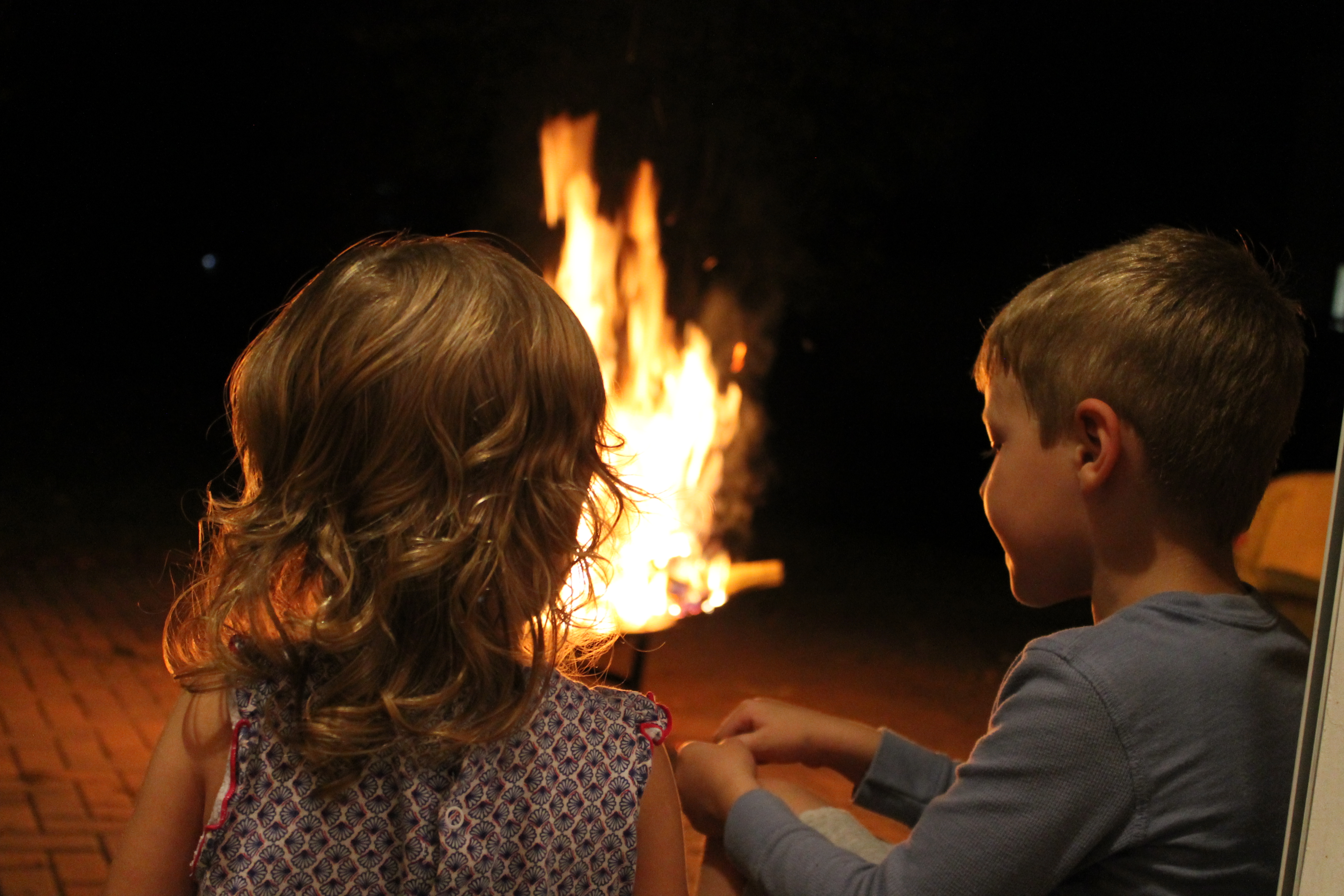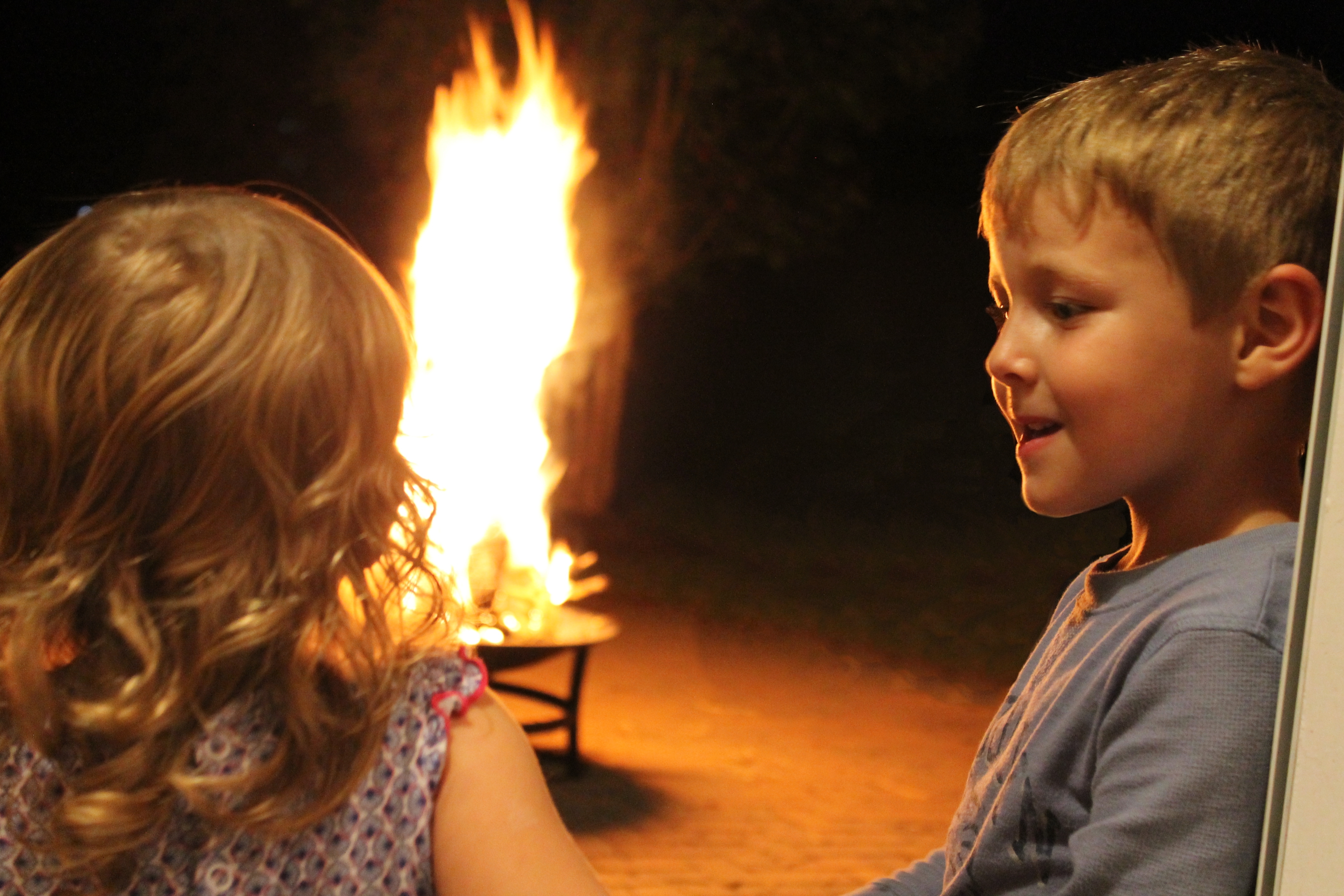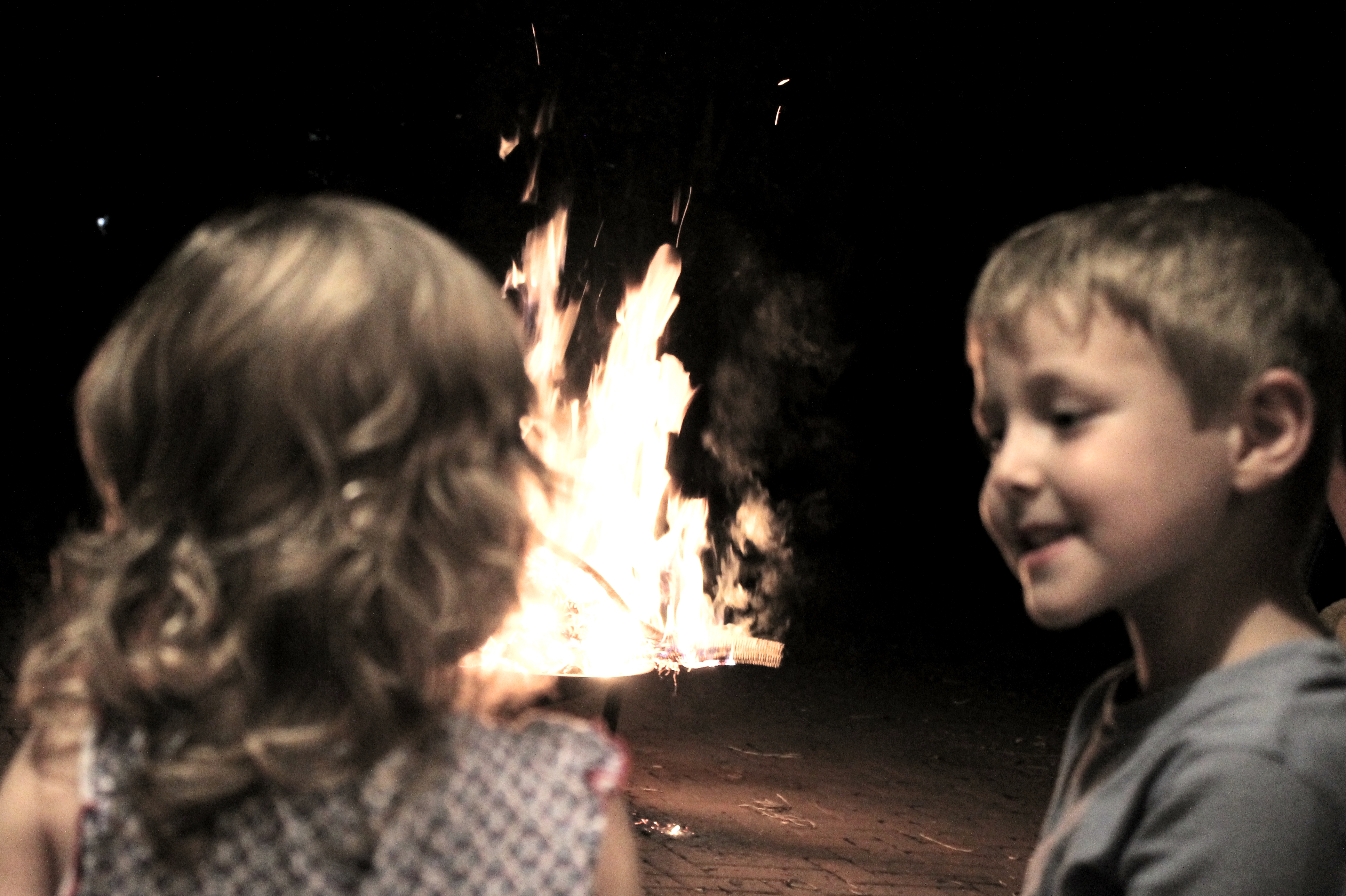
Several months ago, I watched the movie Mr. Holmes. I admit, although Sir Arthur Conan Doyle’s books have so far aggravated me, I love film representations of the infamous Sherlock.
A rather nondescript moment in this movie introduced a tradition into our family, an activity which we love and which helps us pass the time in all kinds of settings.
We call it “Three Things,” but in the movie, Laura Linney calls it “Invisible Stories.”
Laura Linney, playing the part of Mrs. Munro (who is housekeeper to an ailing, elderly Sherlock), begins to describe her late husband to her young son, Roger, who can barely remember his own father:
“Look at you,” she says wistfully to her son as he reads in bed, 22 minutes into the movie. “Do you remember your dad?”
“I remember him holding my hand and taking me to the sea.”
“You’re not remembering—that’s the picture. What about the invisible stories? Some nights at bedtime, your dad would make up stories. He’d say, ‘give me three things!’ And you’d say, ‘a ball, a cat, and Roger.’ So then he’d make up some tale about a ball that had a pet cat named Roger. Always a something, a something, and Roger. … You don’t remember any of the invisible stories?”
“No,” Roger replied quietly. “Do you?”
“I was never any good at stories,” she answered forlornly.
What was a melancholy moment in the movie turned into a creative family tradition for us. Playing “Three Things” has gotten us through many a family car tip and many a wait at a restaurant or doctor’s office. I love this game because it requires absolutely no supplies or pre-planning, and a 4-year-old can play just as well as an adult!
But, warning: It does require willingness and a little imagination.
In our family, we take turns. First, my older preschooler tells me three items. He typically picks three things he can see, but sometimes he gets a little more imaginative.
“A street light, a monster, and a milkshake.”
I tell him a story. (Our family really values stories, whether we are reading them or telling them, and my husband had long ago invented two best friends named Bill and Bob, who go on adventures together, as a framework for our storytelling. Sometimes B&B are snow leopards. Sometimes they turn into turtles, or crabs, or any other animal that suits their adventure. Reality be darned. Bill and Bob always feature prominently in our made-up stories because of how much my son loves them.)
“One night, Bill fell asleep and had a dream. He dreamed about Bob! He dreamed that Bob was leaning against a street light, basking in the yellow glow, chewing his gum. There Bob was, just leaning and thinking, when along came a short, fat, green monster! The monster had a long, red beard, and short, spiky red hair. He walked right up to Bob and said, ‘Hey! You got a quarter?’ [This last bit I attempted to growl in a sort of Brooklyn accent.] Bob said, ‘Sorry, I only have two dimes!’ The monster replied, ‘Two dimes? That’s only twenty cents. I need twenty-five!’ And he stomped off, in search of a quarter. Then, Bill woke up! The next morning, he told Bob all about his silly dream. Then the two best friends went out for chocolate milkshakes. The end.”
Next, I asked my son to tell me a story about Venus, Jupiter, and Earth.
This year, we are doing a very low-key version of kindergarten with Jake, who barely missed the cutoff to be registered for public kindergarten this year. Our very first week of “homeschooling,” (which I put in quotes because I did not pick out a curriculum to use and I have no idea what we will be doing from week to week…) was SPACE WEEK, and my son loved it. Space Week mainly consisted of coloring, silly songs, and reading The Magic Schoolbus.
Here was Jake’s story after Space Week.
“Bill and Bob were in a spaceship! They flew to Jupiter, but then they couldn’t land because there was only gas. [We had just learned that Jupiter is a gas giant with no rocky surface.] So they decided to go to Venus. But they couldn’t land on Venus because Venus is poisonous. [We had learned that the atmosphere of Venus is made of carbon dioxide and sulfuric acid, ack.] So they turned around and took their spaceship back to Earth.”
As that story shows, Three Things is good for helping kids to think about things they may have learned recently—but we play this game in so many settings, with so many different prompts, that it can be good for almost any purpose, from simply passing time to thinking through a new experience to problem-solving.
What I love about asking my kids to come up with three things is that it takes a little of the burden off me to entertain them. It forces them to participate, and it gives me a jumping-off point for making up a story when it’s my turn. I can introduce new vocabulary and ideas if I want, try to find an unusual way to incorporate all of the elements; or I can keep it totally simple and find the quickest way to connect the things my kids name. I also love hearing the stories the rest of my family will produce, stories that are totally different from the direction I would have taken with the same three objects!

Asking children to make up a story, or to help you make up a story, is a great way to introduce them to their creative muscles while they are young! Sometimes their stories won’t be incredibly imaginative (and maybe yours won’t either; not every story is magical), but teaching children to enjoy their own minds and visualize something that’s not right in front of them will be more riveting in the long run than the wildest tale.
Even my 2-year-old likes to participate in three-things stories! Typically, as she is so young, she ends up retelling the story she just heard, or perhaps asking a question about Bill and Bob. But I still consider this a win, because summary is a skill children must learn!
Friends, I share this with you as an alternative to simply turning on a phone game or a video for your kids. True, this game does require your attention in a real way. And we, as a family, admittedly do restrict screen time very firmly, which impacts our kids’ expectations; but both of my kids love the opportunity to hear and generate very short stories, and it genuinely absorbs their attention!
Three Things Stories have become a standard game for us. In fact, the pictures I included here were taken as my kiddos started to tell each other three-things stories during an impromptu bonfire in our backyard, while they waited for their daddy to start making s’mores. (I was inside doing dishes when I heard Jake say, “Hey Caitlin, give me three things!” and I got so excited by the classic stories-around-the-bonfire moment that I immediately laid down on the floor behind them with my camera. I told nary a story that night, and they entertained each other happily until their marshmallows were roasted!)
I try not to say no to Three Things when one of my kids asks me to play. This requires some serious commitment on my part, because my brain is often busy with to-do lists and projects and concerns. It definitely requires energy to play this game, and when my energy is running low, you better believe I am looking for the shortest way to connect the three items in the story. But still I try not to say no, because I want my children to believe that their imaginations are a beautiful, fun place to spend time. I want to nurture their creativity. I want them to push through when things feel hard. I want them to enjoy spending time in family activities as they grow older (and if you know our family, you know games are going to be a part of that!).
The stories we come up with, as a family, range from totally obscure (ahem…mathematical tales from Daddy…) to extremely short and basic. We consider all stories to be acceptable and interesting. We ask questions about each other’s stories and we try to empathize with Bill and Bob in their experiences.

My secret hope is that some day, these two beautiful kids will grow up to be creative problem-solvers, or storytellers, people who can find connections among objects that are not obviously connected, people who can think on their feet, people who are not flustered when someone asks them a hard question or expects them to work on something they’ve never done before. Three Things seems like just a fun game to play with little ones, but it also stretches my own creative muscles in a very pleasing way.
You guys, I cannot recommend three-things stories enough.
